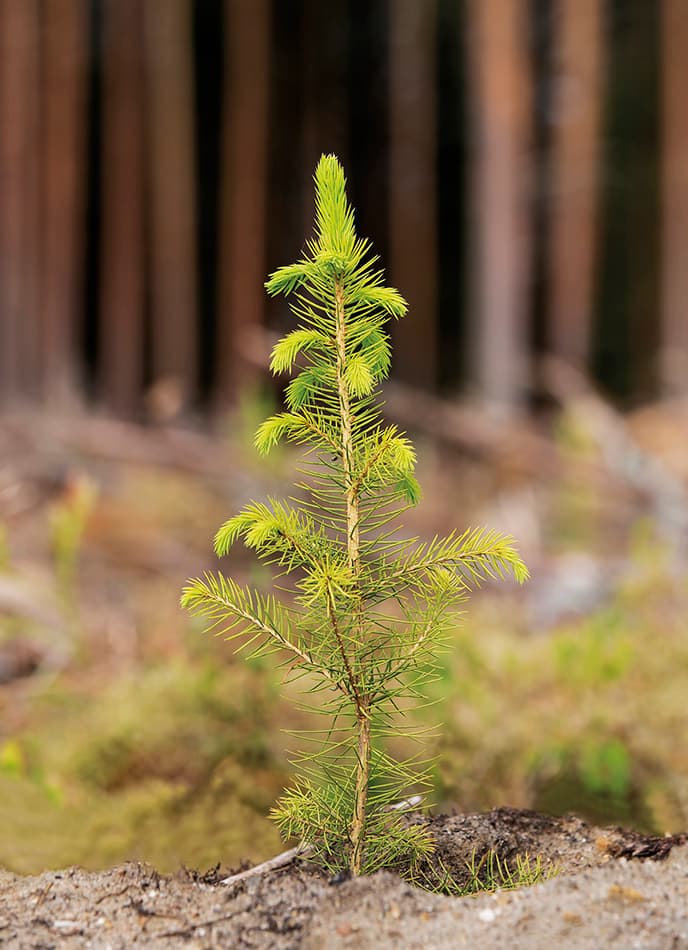The environmental impacts of wooden poles
A sustainable choice throughout its lifecycle
A wooden pole will have environmental impacts throughout its lifecycle. Here, “lifecycle” refers to all of the stages a product undergoes from start to finish. These include the procurement, processing and transport of materials; the product’s manufacturing, distribution, use and maintenance; and its reuse, recycling and decommissioning.
PEFC – managing timber chains of custody
Our wooden poles were granted a PEFC certificate in August 2009. This guarantees that the timber has been sustainably procured and is traceable all the way from the forest to the finished product. By choosing a Tehomet PEFC-certified wooden pole, you know that three new saplings will be planted for every tree that is felled.
During 2022–2023, many updates will be made to the PEFC standard in order to promote forest nature. These stricter requirements will pay particular attention to valuable habitats, forest-dependent species and game, and the conservation of water areas.
Wood is an environmentally conscious choice
A tree’s ability to bind carbon dioxide is not limited to when it is growing in the forest – even finished wood products and wooden buildings act as long-term carbon sinks.
Every cubic centimetre of timber in a wooden product removes about a ton of carbon dioxide from the atmosphere. The longer a wood product remains in use, the longer this carbon is kept out of the atmosphere.
Wood products are easy to recycle when they reach the end of their lifecycle. As Tehomet uses environmentally friendly surface treatment agents, our wooden light poles can also be safely burned to generate energy.
The products in Tehomet’s wooden light pole range are a genuinely responsible choice for a more sustainable tomorrow.
